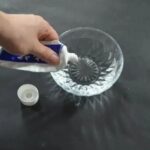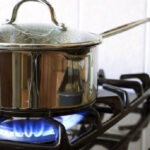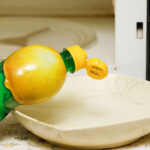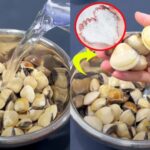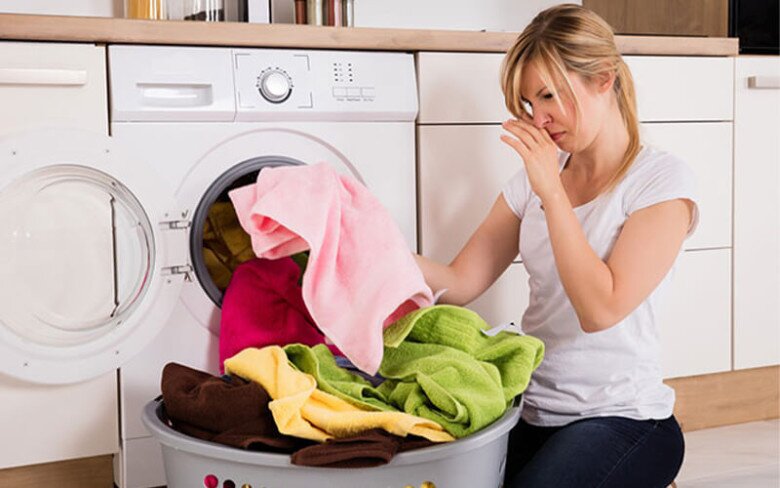
1. Why Do Towels Develop an Odor, Become Stiff, and Discolor Over Time?
– Lack of Regular Cleaning:
Bath, face, and hand towels come into frequent contact with our bodies, sebum, dead skin cells, and other dirt. If they are not washed and cleaned regularly, bacteria and mold can thrive, leading to unpleasant odors.
– Improper Drying Techniques:
Drying towels in a poorly ventilated area, a damp environment, or stacking them on top of each other can cause them to develop a musty smell. In a stuffy environment, towels take longer to dry, and the accumulated moisture provides an ideal environment for bacterial growth, resulting in a foul odor.
– Prolonged Exposure to Humidity:
Humid and warm environments also favor the growth of bacteria and mold, causing towels to become smelly and sticky.
– Inadequate Drying:
If bath towels are not completely dried, residual water remains. Over time, bacteria on the towels will proliferate.
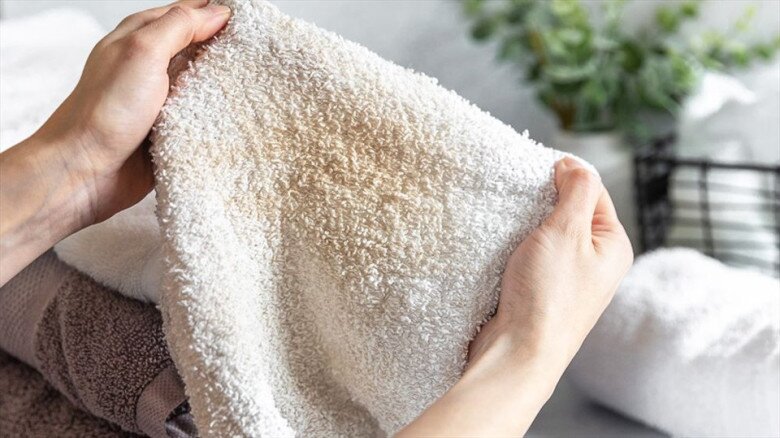
2. How to Get Rid of Odor and Stains on Towels
To soften towels and remove stubborn yellow stains and odors, add a few extra ingredients to your wash water.
First, find a basin and place the towel inside. Add some salt, which is a great disinfectant and helps fix colors, keeping the towels vibrant for longer.

Next, sprinkle in some baking soda. It’s a natural cleanser that deeply cleans towels.
Add a small amount of detergent to the basin. We tend to sweat, and oil residue will stick to the towels, so detergent will help remove those stains more effectively.
Pour in some white vinegar, too. It softens stains and removes limescale, not only tackling dirt but also making the towels softer.
Finally, add warm water at around 50–60 °C. Avoid using 100 °C water, as it can damage the towel fibers, making them more prone to breakage and discoloration.
After adding the water, stir well to dissolve the salt and baking soda. Soak the towels for about 15 minutes to loosen stains.
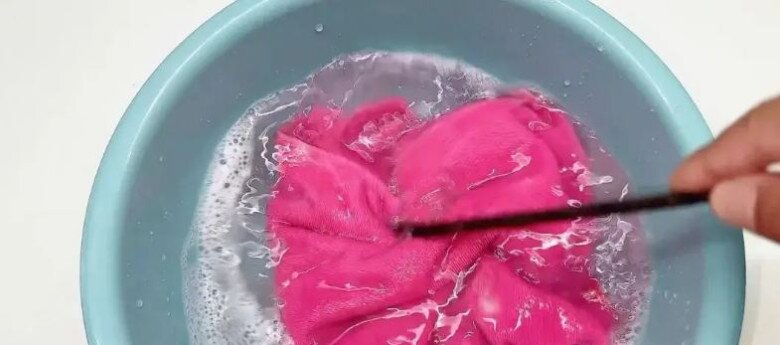
After this, gently knead the towels, and the stains will come right out. Finally, rinse with water and dry in a well-ventilated area. Avoid hanging them in the bathroom, as the humidity creates an ideal environment for bacteria to thrive and produce unpleasant odors.
Sunlight is essential, too. Only then can the mites and bacteria on the towels be eliminated by the sun’s rays.
The Magic Ingredient: Transform Your Meals Overnight
Introducing the ultimate spice, a true culinary powerhouse that will revolutionize your dishes and take your taste buds on an unforgettable journey. Uncover the secrets of this magical ingredient and discover how it can transform your cooking, elevating every meal into a true masterpiece. Read on to explore the wonders of this extraordinary spice and unlock a world of flavor.
The Ultimate Guide to Sparkling Clean Microwaves: A Cost-Effective Solution
“Over time, your microwave oven can become a greasy, grimy mess with food stains and odors. But don’t despair! With these simple, easy-to-follow steps, you can quickly and effectively clean your microwave and get rid of that nasty smell. Say goodbye to the grime and hello to a sparkling, fresh-smelling appliance!”

























